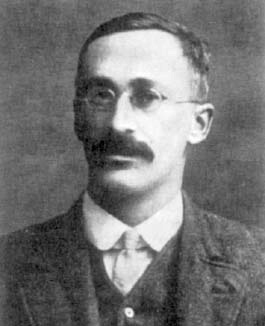Module 22 – Matched Pairs Lab (14 of 19)
Description
Progress Check
Use this activity to assess whether you and your peers can:
Under appropriate conditions, conduct a hypothesis test about a mean for a matched pairs design. State a conclusion in context.
Context
Gosset’s Seed Plot Data

- William S. Gosset was employed by the Guinness brewing company of Dublin. Sample sizes available for experimentation in brewing were necessarily small. At that time, Gosset contacted a famous statistician Karl Pearson (1857-1936) and was told that there were no techniques for developing probability models for small data sets. Gosset studied under Pearson, and the outcome of his study was perhaps the most famous paper in statistical literature, “The Probable Error of a Mean” (1908), which introduced the T-distribution.
Since Gosset was employed by Guinness, any work he produced would be owned by Guinness, so he published under a pseudonym, “Student”; hence, the T-distribution is often referred to as Student’s T-distribution.
To illustrate his analysis, Gosset used the results of seeding 11 different plots of land with two different types of seed: regular and kiln-dried. He wanted to determine if drying seeds before planting increased plant yield. Since different plots of soil may be naturally more fertile, this confounding variable was eliminated by using the matched pairs design and planting both types of seed in all 11 plots.
The resulting data (corn yield in pounds per acre) are as follows.
Corn Yield in Pounds per AcrePlotRegular seedKiln-dried Seed11903200921935191531910201142496246352108218061961192572060212281444148291612154210131614431115111535
We use these data to test the hypothesis that kiln-dried seed yields more corn than regular seed.
Because of the nature of the experimental design (matched pairs), we are testing the difference in yield.
Differences in Corn YieldPlotRegular seedKiln-dried SeedDifference119032009–10621935191520319102011–10142496246333521082180–7261961192536720602122–62814441482–38916121542701013161443–1271115111535–24
Note that the differences were calculated: regular ? kiln-dried.
Variables
Regular seed: regular seeds that were traditionally used for planting
Kiln-dried seed: seeds that were kiln-dried before planting
Data
Open the seeds datafile in the Stats at Cuyamaca College group on StatCrunch (directions – opens in a new tab).
Prompt
State the hypotheses and define the parameter.
Checking conditions: Since Gosset invented the T-distribution, we will assume that his sample meets the conditions and proceed with the T-test. Regardless, answer these questions to demonstrate your understanding of the conditions for use of the T-model.
But first you will need to review the dotplots for the data (opens in a new tab).
Which graph is used to check conditions? Why?
What do we look for in the graph to verify that conditions are met?
What else do we need to know about the sample of seeds before using the T-test?
Use StatCrunch to find the T-score and the P-value. Hint: as you work through the StatCrunch directions, keep in mind that we want to calculate the differences as regular ? kiln-dried . So you will choose Regular seed for Sample 1 and Kiln-dried seed for Sample 2. (directions)
Copy the information in the StatCrunch output window and paste it into the textbook with your response.
State a conclusion based on the context of this scenario.
List of StatCrunch Directions
Click here for StatCrunch Directions
Module 22 Discussion Board
Use the Module 22 discussion board (opens in a new tab) to ask questions or provide feedback about the problems in any Module 22 activity – including this peer-reviewed assignment.
Have a similar assignment? "Place an order for your assignment and have exceptional work written by our team of experts, guaranteeing you A results."








